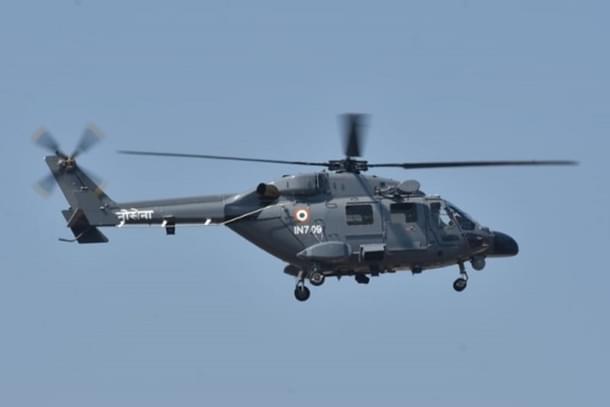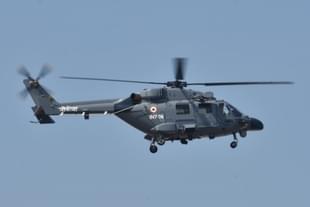Defence
ALH Dhruv Cleared For Emergency Operations, Routine Flights Still On Hold After HAL Shifts To Steel Control Rods
Ujjwal Shrotryia
May 31, 2023, 12:02 PM | Updated 12:02 PM IST
Save & read from anywhere!
Bookmark stories for easy access on any device or the Swarajya app.


The Indian Armed Forces has cleared the Advanced Light Helicopter (ALH) Dhruv helicopter for emergency operations, while keeping it grounded for routine operations.
Apart from ALH Dhruv, Rudra (Dhruv's armed variant) and Light Combat Helicopter (LCH) of the IAF are also cleared for flight operations.
This comes two weeks (15 May) after HAL decided to use steel control rods instead of aluminium control rods.
The ALH was grounded after a crash in Kishtwar region, of Jammu and Kashmir, which killed one army soldier and injured two pilots.
Interestingly, this grounding came just two days after the helicopter was allowed to resume normal operations following two successive crashes in less than three weeks (8 March and 26 March).
In total, three helicopters crashed in span of three months.
According to a report, the Directorate General of Military Operations (DGMO) sent a letter on 22 May to the three services, allowing the helicopter to be operated in emergency and urgent situations. “ALH and LCH hepters are op endorsed to be cleared for 'op emer flg' (operational emergency flying),” the letter said.
The 'operational emergency flying' here means, flying in emergency or urgent situations like casualty evacuation and air maintenance of troops deployed in forward areas.
Training sorties, on the other hand, are not allowed.
The DGMO's letter further described the preconditions of flying operations, stating resumption of flights will follow, the prescribed “satisfactory conduct of independent maintenance flight safety audit” of critical items and systems, and compliance with safety-related “special technical instructions and alert notices” issued by the technical authorities.
The three successive crashes also prompted the Bengaluru-based Centre for Military Airworthiness and Certification (CEMILAC) to launch a design review of the helicopter's booster control rods.
The design review highlighted the drastic reduction in the fatigue life of the aluminum rods, happening due to an assembly error of serrated washers in the booster control rods.
“The drastic reduction in the fatigue life of the aluminum-made control rod with wrongly assembled serrated washers has been verified experimentally at Rotary Wing Research and Design Centre (RWR&DC), HAL as part of the committee’s investigation,” CEMILAC then said in the letter addressed to all the services.
Following the result of the design review, Hindustan Aeronautics Limited (HAL) on May 15, has decided to change the troubling Aluminum-made control rods to steel control rods.
Steel rods will be easier for maintenance, officials said, adding that the replacement program will commence shortly and is expected to take one-year to complete.
The three services and Coast-Guard combine operates more than 330 ALH's and its variants.
The ALH is critical for supporting operations in the high-altitude regions of Himalayas, since it is the only helicopter in Indian inventory that can operate satisfactorily in areas above 18,000 feet, apart from the vintage Cheetah and Chetak helicopters.
Staff Writer at Swarajya. Writes on Indian Military and Defence.





